Floor and ceiling air conditioners: principle of operation, selection and installation
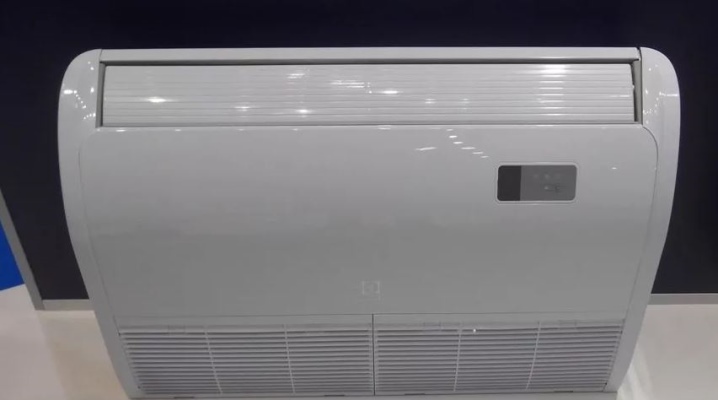
Such models are relevant for premises with a limited area; they can be used by homeowners who do not want to see bulky structures in their interior. They will not only save you from large installations, but also from the direct air flow to people. The direction of blowing in inverter floor-ceiling air conditioners is straight-line or the jets are distributed on the sides, which excludes the possibility of catching a cold.
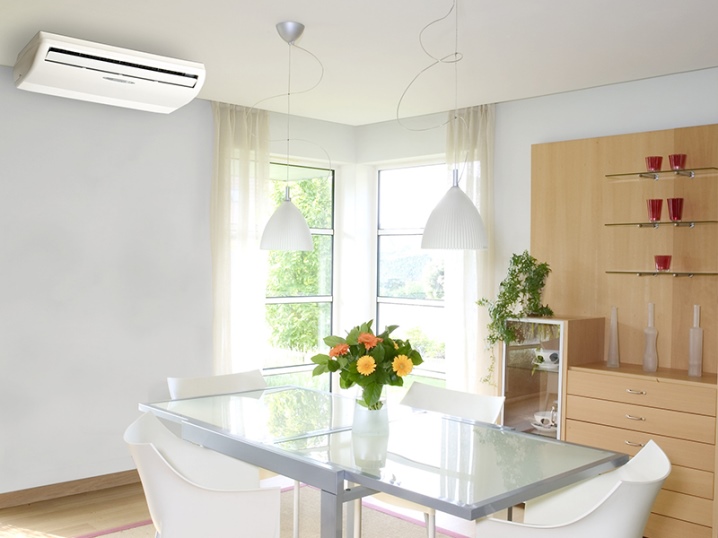
Device
Inverter models come in several varieties, which differ in design, technical indicators and location of the indoor unit:
- cassette devices are mounted in the suspended part of the ceiling;
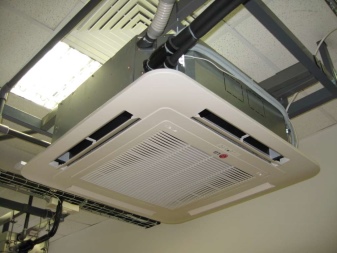

- universal type (floor-ceiling air conditioners) are installed both on the ceiling and on the floor;
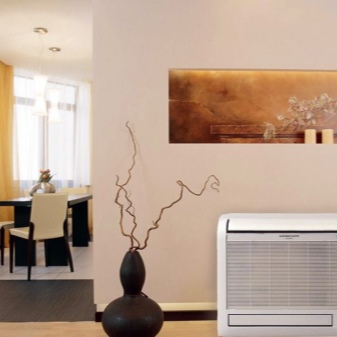
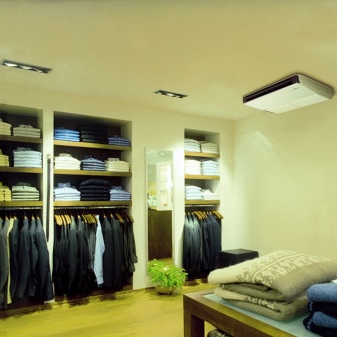
- wall-ceiling mounted higher with a bracket.
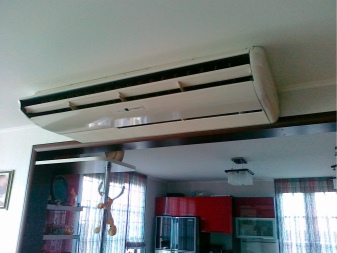
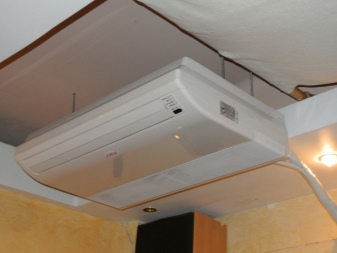
Appliances are classified as household or semi-industrial equipment. The latter can be combined with a ventilation system, respectively, and its power will be higher.
The floor / ceiling air conditioner functions as a split wall system. Consists of the following elements:
- outdoor and indoor units;
- pipeline mechanism;
- control systems.
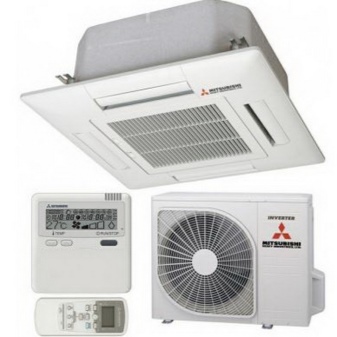

This equipment is explosion-proof and has a number of advantages:
- works almost silently;
- availability of a perfect condensate collection and drainage system;
- antibacterial cleaning filters;
- multi-speed turbofan;
- the air conditioner is equipped with modern high-tech electronics and a screen for a more even distribution of cold.
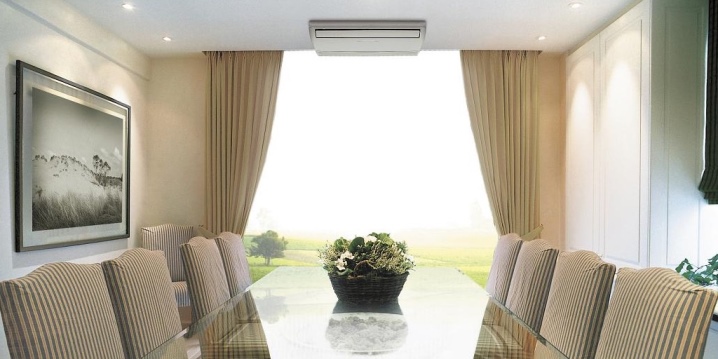
The device with a power of 5 to 20 kW can serve premises with an area of up to 80-100 square meters.
Principle of operation
The functioning of the structure depends on the indoor unit, which is mounted horizontally on the ceiling and vertically on the floor against the wall. The air conditioner will work equally effectively in both the first and second cases. The air flow exits from the end of the indoor unit. There are samples with outlet louvers on both sides and, less often, with a one-sided version. When placed overhead, warm or cold blowing (depending on the selected mode) occurs along the ceiling and is evenly distributed in the room. If the air conditioner is installed against a wall on the floor, the air flow circulates from bottom to top.
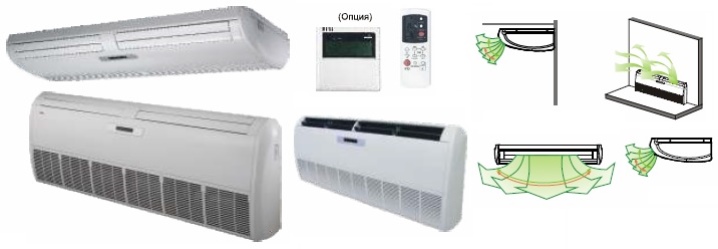
The principle of work with surface air distribution is more efficient and better for people than the flow from the wall unit. In the latter case, the air conditioner affects the well-being of those who breathe circulated air. The installation of floor-ceiling options is resorted to in two cases.
- In retail premises, where stands hang tightly on the walls. In this situation, the indoor unit has a place on the ceiling in a horizontal view.
- In the office, the air conditioner is placed against the wall on the floor, and it evenly distributes the air in the room. The flow can be directed to create both a thermal zone and a cool curtain. This is achieved by zoning the space into two halves.
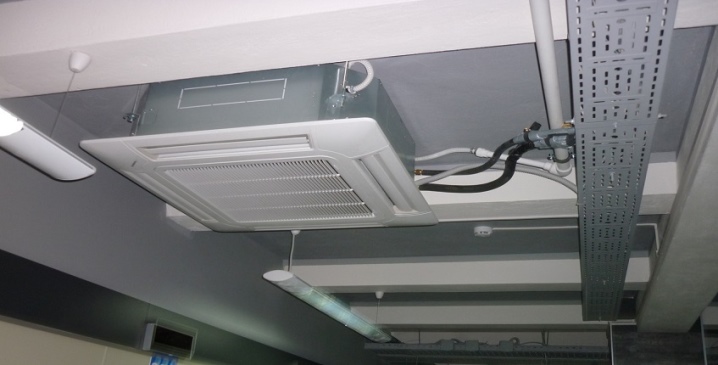
Air enters the indoor unit through a wide filter on the front side. The stream is pushed out through a narrow nozzle - this creates a gradual circulation over an impressive distance.
Advantages and disadvantages
Air conditioning equipment of floor-ceiling type has a convenient shape and small dimensions, which makes them attractive to use. Here are a number of other advantages of such air conditioners:
- power and performance at a high level;
- simple and convenient operation due to automatic control;
- ample opportunity for setting various parameters;
- consume little electricity;
- suitable for sleeping quarters due to quiet operation;
- some models are able to automatically change the operating mode depending on the weather outside;
- an acceptable option for a person to distribute the air flow, and others.
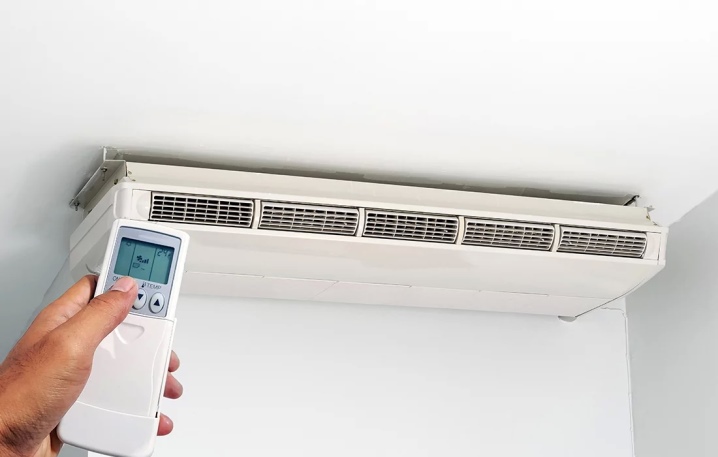
The disadvantages include the high price for these types of air conditioners, the complexity of installation. Jobs require certain skills, knowledge, and conditions. The disadvantages of such devices include inefficient operation in heating mode. It is important to comply with the requirements for the height of the ceilings for installation: it must be at least 2.5 m.
Manufacturers
Attention is attracted by those models that have proven themselves in the market due to their high production characteristics, as well as taking into account consumer feedback and the rating of the manufacturer. From these positions, we present a list of the most popular brands and brands.
- The Chinese company GREE has been producing air conditioners since 1989. She started exclusively from the domestic market, now she has earned world-class recognition in the production of climatic structures. In the line of this company there are multi-split systems. The series of floor and ceiling installations includes the following models: GREE NAB-K, GMV-R36ZD, U-MATCH INVERTER, FREE MATCH IV and others.
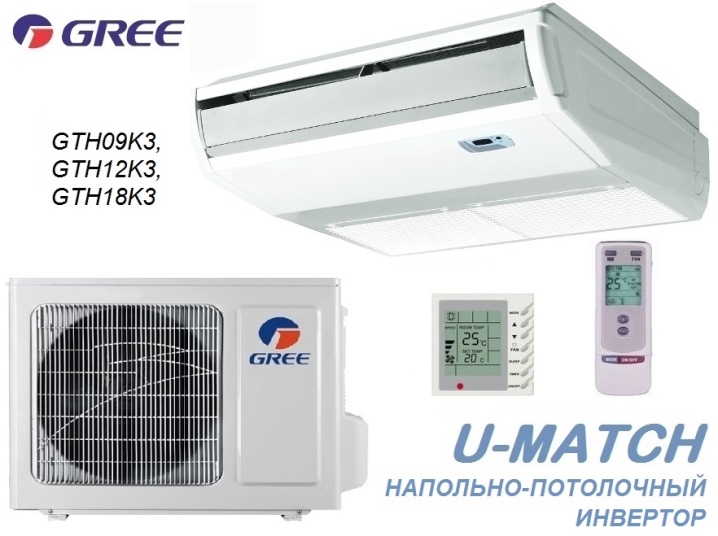
- Korean electronics and home appliance manufacturer LG has a dedicated group of Air Conditioners and Energy Solutions, which has been developing and manufacturing air conditioning systems since 1968. For half a century, the company has been improving the samples and production technology of climatic equipment, presenting its innovations to consumers from different countries: floor-to-ceiling air conditioners (standard) with UV12 marking (18, 24, 30, 36, 48, 60), as well as CV09 inverters ( 12, 18, 24), UV30W (36, 42, 48, 60). Depending on the place of installation, characteristics, type of refrigerant, the device is equipped with the required version of the external unit.
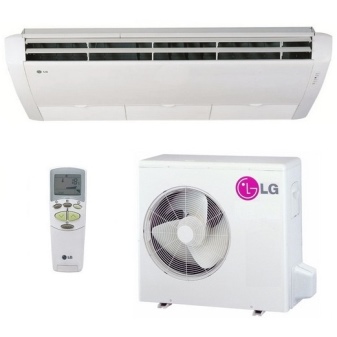
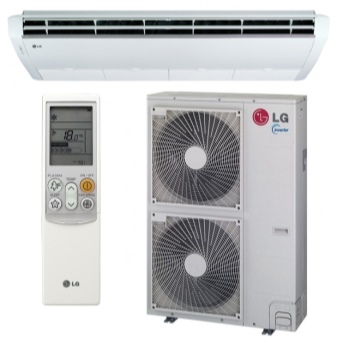
- Japanese company Panasonic provides consumers with the PACi Inverter series - this is an assortment of indoor units, models in terms of cooling capacity 3.6-14.0 kW and the same profile height - 235 mm. To create a split system, you have to choose an external block.
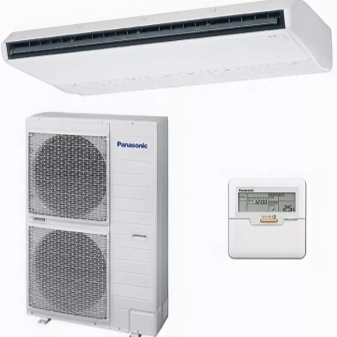
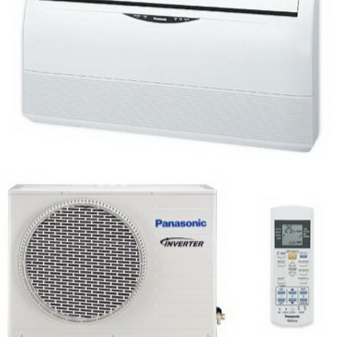
- The young Ballu brand is known in Eastern Europe and the CIS. It produces two series of floor-ceiling air conditioners: BCFA and BLC CF with single-phase power supply models (18HN1, 24HN1) and three-phase (36HN1, 48HN1, 60HN1). Air conditioners of this brand are assembled from imported components, including those produced by the famous Japanese brand Toshibo.
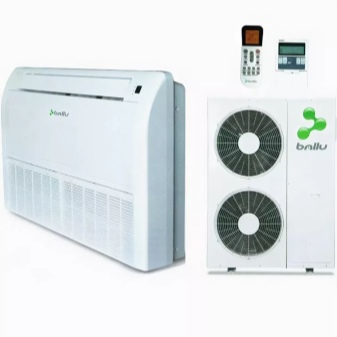
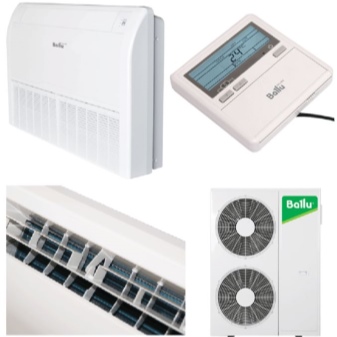
Floor-ceiling samples of air conditioning systems are also represented by Haier, Mitsubishi Electric, Daikin, Fujitsu. The models differ in production capacity, additional functions and some other parameters. This type of conditioner combines neat forms and safety for human health.
How to choose?
The selection of the required sample is carried out according to the general algorithm. First of all - focus on the following parameters:
- heating and cooling capacity;
- performance indicators taking into account the ambient temperature.

Important information on the indoor unit:
- what is the power and air consumption;
- dimensions and weight;
- sound level;
- the presence of additional functions for ionization, humidification (dehumidification), air purification, and so on.

Orientation on the external block:
- to noise;
- type of compressor;
- dimensions and weight;
- indicators of power and air consumption.
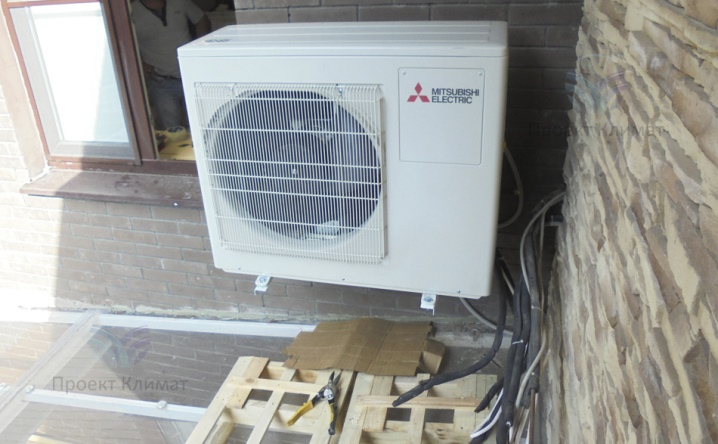
When choosing equipment, you need to pay attention to production characteristics, terms of warranty service. It would be nice to read the reviews of those who already use air conditioning systems of this type.
Installation options
Installation instructions in this case will be professionally performed only by masters of their craft. Floor-to-ceiling air conditioners are fixed with brackets on the wall or installed vertically on the floor:
- In the first version, the air conditioner is installed on a mounting plate (included in the kit), which is fixed to the ceiling tiles.
- In the second, the device is fixed to the wall and on the floor. In this installation, the mounting plate is attached to the wall and provides additional support to the structure body.

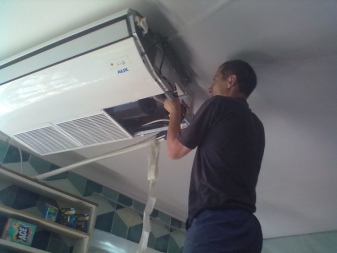
It is better to entrust the installation work to professionals, since in many respects the quality of the HVAC equipment depends on the correctness of its installation. Only a specialist with knowledge will be able to precisely connect freon pipes, arrange cables, set the required parameters. Specialized engineering firms provide this type of service.
Operating tips
Before using the technique, you must read the instructions for use. To extend the life of your air conditioner, it is important to follow some simple rules.
- Observe the optimal operating mode of the device within 21-23 degrees.
- Minimize heat loss by closing windows and doors before starting the equipment.
- Cleaning is required periodically. To prevent the air filters from failing, they must be regularly cleaned of dust and dirt. It is recommended to rinse this part with warm water every 15 days. After thoroughly drying, the filter is put back into the air conditioner. You can do these steps yourself.
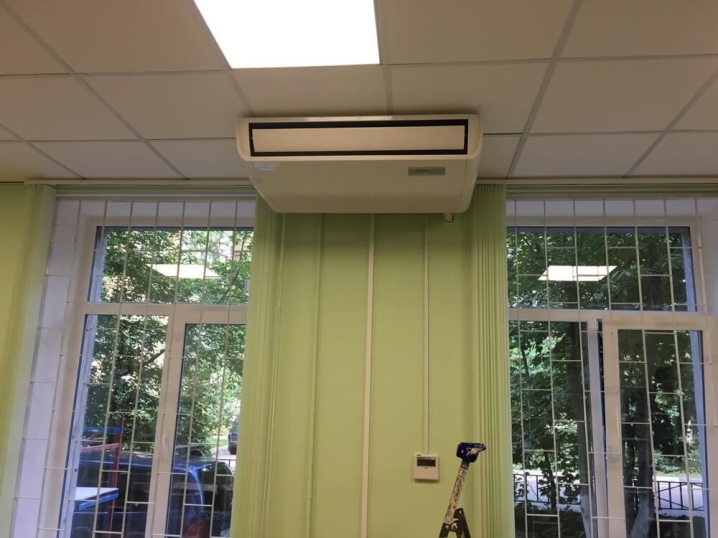
But once every 6 months, it is advisable to call a master from the service center for a detailed check of the operating parameters, to identify the necessary fluids in the refrigeration circuit. When the air conditioner is planned to be turned off for a long time, its internal elements are dried by means of the "ventilation" mode.
Examples in the interior of the house
Floor-to-ceiling air conditioners are easy to fit into any interior, all mounts are included with the main climate control equipment. For example, in a large hall of a private house with a staircase, it would be most appropriate to place the air conditioner above the sofa and attach it to the base of the staircase at the top... In an ordinary adjoining room, the device will look organically near the doorway on the floor against the wall.
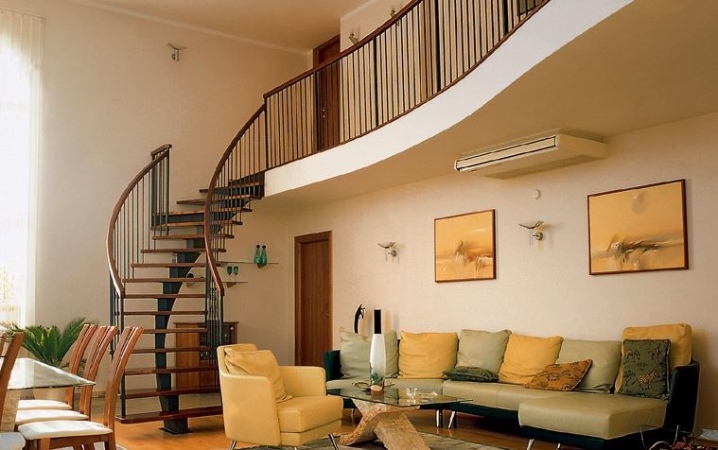
Such air conditioners are a good option for climate control in retail outlets and offices. In these rooms there are many not only people, but also technical devices, from which heat emanates during work. Wall-mounted climate control equipment is not able to cope with creating an optimal atmosphere in large areas. Therefore, floor-to-ceiling split-systems in these conditions are an ideal solution.
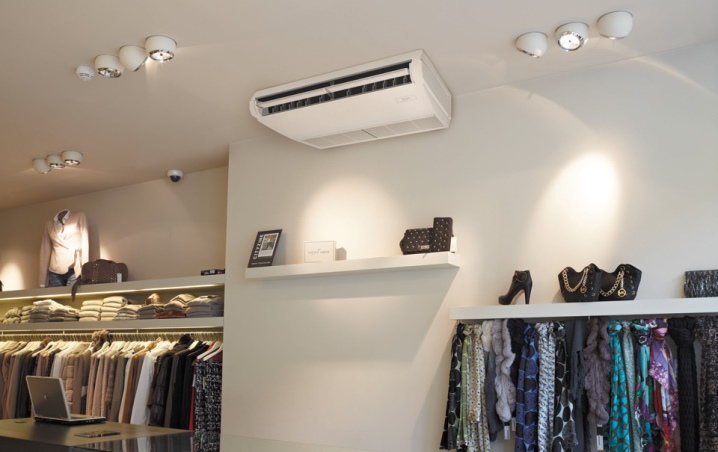
For information on how to use it correctly with a floor-ceiling air conditioner, see the next video.













The comment was sent successfully.